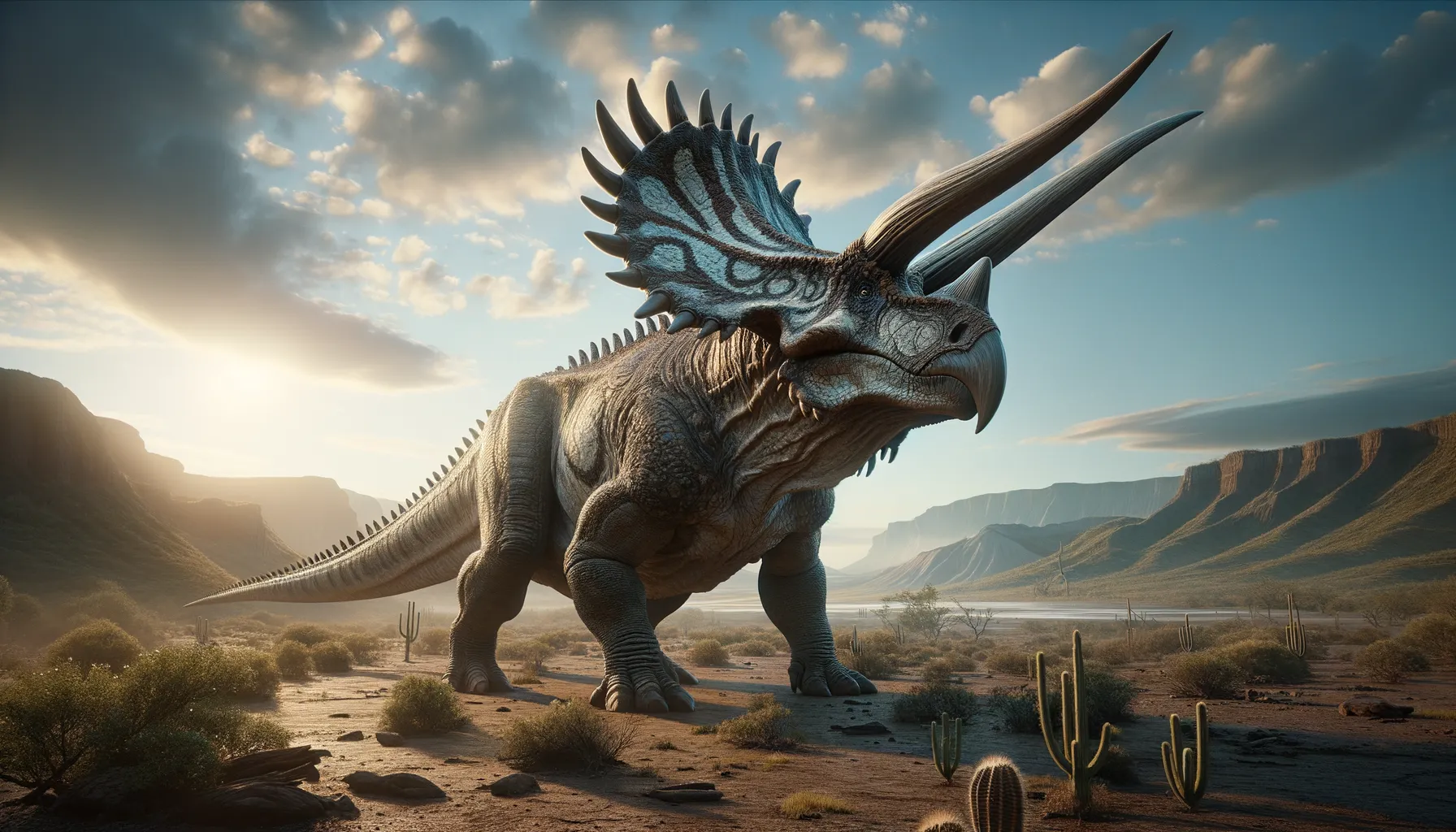
Coahuilaceratops
Horned giants of the Mexican plains.
Period
Cretaceous
Length
Around 20 feet long.
Height
Approximately 8 feet tall at the shoulder.
Weight
Weighed up to 4 tons.
Coahuilaceratops, known for its massive horns, is one of the largest ceratopsians discovered in Mexico. This herbivorous dinosaur lived during the Late Cretaceous period and had a robust body structure well-suited for its role as a plant-eater. Its discovery added significant knowledge about the diversity of horned dinosaurs in North America during that era.
Diet
Coahuilaceratops was herbivorous, primarily feeding on tough, fibrous plant material. Its beak-like mouth was well-adapted for slicing through thick vegetation such as ferns and cycads.
Hunting
Being a herbivore, Coahuilaceratops did not hunt. Instead, it would have to frequent areas with abundant plant life, relying on its size and horns for protection rather than predatory behavior.
Environmental challenges
Coahuilaceratops faced environmental challenges typical of the Late Cretaceous period, including fluctuating climates and competition for food sources. This dinosaur needed to navigate these conditions while avoiding predators that roamed the area. Droughts or changing vegetation patterns could also present survival challenges.
Speed
Likely slow due to its heavy build.
Lifespan
Estimated at around 70-80 years.
First discovery
Unearthed in Coahuila, Mexico in 2001.
Fun Facts
- Coahuilaceratops is known for having one of the largest horns of any dinosaur, with estimates suggesting its horn could be as long as four feet.
- This dinosaur lived about 72 million years ago during the Late Cretaceous period.
- Coahuilaceratops was discovered in the Mexican state of Coahuila, which is how it got its name.
- It belonged to the ceratopsian family, which also includes the famous Triceratops.
- Coahuilaceratops likely traveled in herds for protection against predators.
- The landscape it roamed was lush and full of life, unlike the desert environment that covers the area today.
- The discovery of Coahuilaceratops has provided significant insights into the diversity of dinosaur species in North America.
Growth and Development
Young Coahuilaceratops likely experienced rapid growth during their early years, reaching near adult size in just a few years, similar to modern herbivorous animals. As they grew, their distinctive horns and frill would become more pronounced, aiding in defense and possibly social interactions. Their slow maturity could mean extended parental care or herd protection.
Habitat
Coahuilaceratops inhabited lush, coastal floodplains in what is now Mexico, benefiting from the warm and humid climate. These areas were rich in various plant life, providing ample feeding grounds. This dinosaur preferred wide open spaces where it could travel in groups, helping to deter predators.
Interaction with other species
This dinosaur likely coexisted with numerous other species, including both herbivores and carnivores. Its horns and size would have been a deterrent against most predators. Coahuilaceratops might have interacted with other ceratopsians or herbivores in mixed herds for protection against carnivorous dinosaurs.
Natural lifespan
Coahuilaceratops could have lived up to 80 years in its natural environment.
Reproduction
This dinosaur likely reproduced by laying eggs, with nests possibly built on the forest floor. Parental care would have been important, as young Coahuilaceratops would be vulnerable to predators. Their reproductive cycles could be seasonal, aligning offspring birth with periods of abundant resources.
Social behaviour
Coahuilaceratops may have traveled in herds, which served as a defense mechanism against predators. Social behavior also included using their horns for communication or competition during mating seasons. The herds possibly consisted of a mix of ages, offering protection and increasing survival chances for the young.
Fossil locations
Fossils of Coahuilaceratops have been primarily found in the Mexican state of Coahuila. This discovery has positioned the region as a critical area for late Cretaceous dinosaur research. The well-preserved remains helped to illuminate the diversity and spread of ceratopsians in North America.
